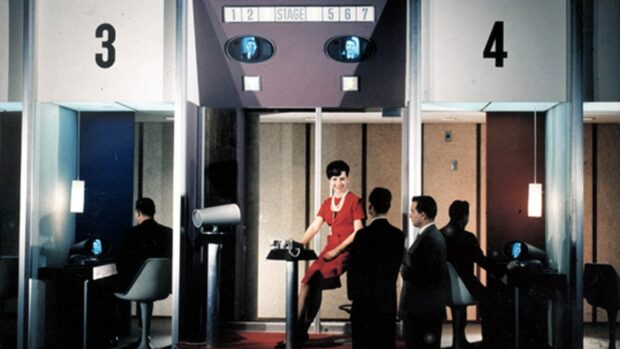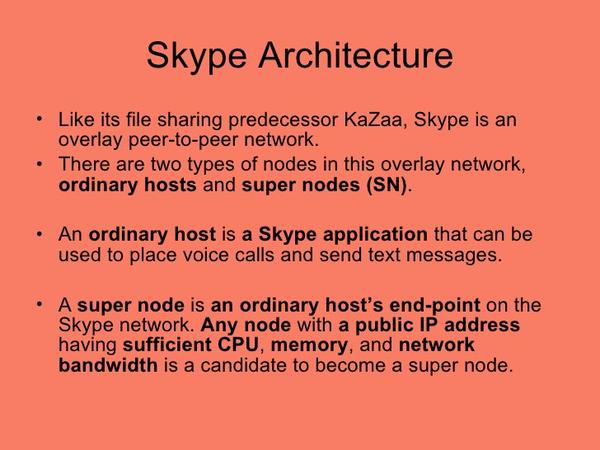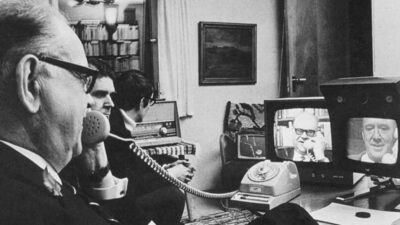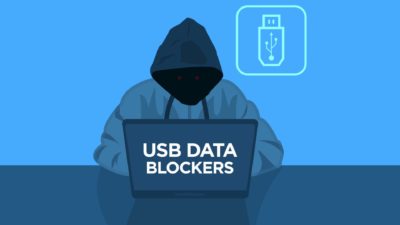Today’s modern video conferencing technology took decades to develop. Here are some interesting facts from the history of video conferencing.
Table of Contents[Hide][Show]
- 01) The First Video Call Was In 1956
- 02) There Were Public “Videophone Booths”
- 03) Videoconferencing Was A Commercial Failure
- 04) Videoconferencing Hardware Was Massive
- 05) The Large Hadron Collider Progressed Video Conferencing Technology
- 06) The First Live Video Satellite Broadcast Was From Afghanistan
- 07) Skype’s Backend Is Based On Kazaa
- 08) The Future of Videoconferencing Is In The Cloud
- How Do You Use Video Chat Technology?
Can you even remember what life was like before video communication technologies like FaceTime or Skype? Out of all of the fantastic tech that the Internet has made possible, video conferencing is by far one of the most impactful (sorry Tinder and Napster). Modern video conferencing and video chat technology allow both families and businesses, from anywhere in the world, to talk with one another face-to-face as though they were sitting in the same room.
Thanks to tablets, smartphones and high-speed Internet, video chatting is as simple as pressing an icon from your contacts. But there’s a dark history that led us to this point. Company after company have failed over and over again in an exercise in insanity to perfect video chat technology. Today’s modern video conferencing technology took decades to develop. Here are some interesting facts from the history of video conferencing.
01) The First Video Call Was In 1956
The debut of video conference technology is a lot older than you might expect. In 1956, AT&T started working on a “Picturephone” prototype capable of transmitting still images every two seconds over regular analog public switched telephone network (PSTN) telephone lines.
After almost a decade of testing and refinements, the technology finally made its debut at the 1964 World’s Fair in New York City. On April 20, 1964, attendees at the World’s Fair at Flushing Meadow Park got a chance to place a video call to a complete stranger at the Picturephone exhibit at Disneyland in California.

02) There Were Public “Videophone Booths”
In the summer of 1964, AT&T installed its Picturephone “Mod I” systems in public locations in New York City, Washington D.C., and Chicago. The New York location was in the city’s famous Grand Central Terminal. Callers had to make reservations in advance and pay a large sum of money for short calls between these three locations. For example, a call from Washington, D.C. to New York was $16 for every 3 minutes. A 15-minute video call could cost as much as $80 ($610 in 2014 dollars).
Although people were largely curious about the technology, it never caught on and all three locations were shut down a few years later in 1968.
03) Videoconferencing Was A Commercial Failure
In 1970, AT&T tried a different approach. Instead of having to go to a public videophone booth, they made the technology installable at your home or office. AT&T offered its Picturephone service for $160 a month for 30 minutes of call time plus $0.25 for each additional minute. AT&T thought the system would be a huge success, but by the mid-1970s, only 500 systems had been installed. According to AT&T, the system failed due to the large size of the system, problems with the telephone infrastructure, the expense of using it, and its clunky, obtuse controls.
For a technology so common and important today with apps like FaceTime and Skype, it’s hard to imagine that videoconferencing was such a massive failure for so many years.
04) Videoconferencing Hardware Was Massive
If the rest of the telecom industry were paying attention, then they would have realized that clearly bigger wasn’t better and that videophone technology was probably doomed to fail. Compression Labs, one of AT&T’s competitors, released their own video conference system in 1982, called the CLI T1, which was not only physically bigger but even more expensive. The Compression Labs video conference system cost $250,000 for the hardware and $1,000 an hour to place a call. It was the only video conference system for several years. Another option wasn’t available until 1986 when PictureTel released a far cheaper video chat solution.
05) The Large Hadron Collider Progressed Video Conferencing Technology

Researchers at Caltech-CERN developed a video conferencing technology called Virtual Room Videoconferencing System (VRVS) to help scientists communicate and collaborate on the Large Hadron Collider Project. It was a huge hit with everyone involved and showed the industry how video conferencing software could be used to help increase productivity.
06) The First Live Video Satellite Broadcast Was From Afghanistan
The first live video broadcast using satellite video conferencing technology took place in 2001 during the opening of the second Gulf War. Reporters were able to use this new technology to send live video reports from Afghanistan back to their network headquarters for rebroadcast. Previously, war zone video reports had to be recorded, edited, and then uploaded. Otherwise, news crews had to risk the exposure of having a giant satellite truck in the middle of a conflict.

07) Skype’s Backend Is Based On Kazaa
Three Estonian software engineers, Ahti Heinla, Priit Kasesalu, and Jaan Tallinn used the backend from their illegal music-sharing application, Kazaa, to power Skype. The first public version of Skype was released in August 2003.

08) The Future of Videoconferencing Is In The Cloud
Today, there is a multitude of different video conferencing systems and services available. Throughout the history of video conferencing, the technology has evolved from hardware and app-based to cloud-based systems. Companies like Zoom, Join.Me, and BlueJeans all offer cloud-based video conferencing services that enable businesses and consumers around the globe to easily connect with anyone face-to-face.
How Do You Use Video Chat Technology?
Did you know all of these facts about the history of video conferencing? What video conferencing software or video chat systems have you used before? Please tell us about them in the comments below.
Interesting Facts From The History Of Video Conferencing ... #VideoConferencing #RemoteWork #WorkFromHome #VideoChat Share on XRelated Articles:
- Why Real-Time Communication is the Future of Mobile Gaming
- How To Change Your Background In Microsoft Teams
- Skype 5 Sucks: Here’s How to Downgrade
- Two Dogs FaceTiming – They Weren’t Amused

Frank Wilson is a retired teacher with over 30 years of combined experience in the education, small business technology, and real estate business. He now blogs as a hobby and spends most days tinkering with old computers. Wilson is passionate about tech, enjoys fishing, and loves drinking beer.






















 7 Shocking Thanksgiving Food Facts (That Might Make You A Holiday Food Hater)
7 Shocking Thanksgiving Food Facts (That Might Make You A Holiday Food Hater)
Leave a Reply
You must be logged in to post a comment.